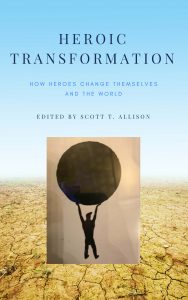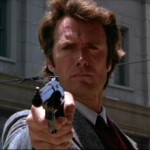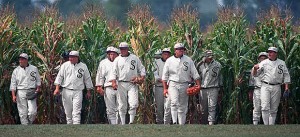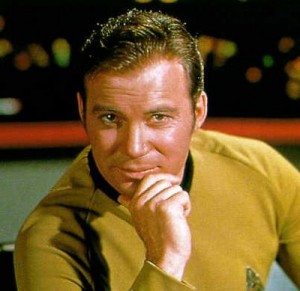 The human journey is brimming with opportunities for growth and development. This volume, crafted superbly by a talented group of young student-scholars at the University of Richmond, explores the myriad ways that human beings have evolved to become extraordinary heroes.
The human journey is brimming with opportunities for growth and development. This volume, crafted superbly by a talented group of young student-scholars at the University of Richmond, explores the myriad ways that human beings have evolved to become extraordinary heroes.
There are two types of heroic transformation. The first type refers to the process by which people undergo the significant change and growth necessary to become heroes. This transformation is a personal metamorphosis that often results from setback, transgression, and suffering.
The second type of heroic transformation refers to the hero’s ability to transform society. Once personally transformed, the hero is in a position to make her mark on society. “Transformed people transform people,” as Richard Rohr has said.
Most hero journeys feature both of these types of transformations. The heroes profiled in this book who have undergone heroic transformations include Audrey Hepburn, Susan B. Anthony, Thurgood Marshall, Muhammad Ali, Eleanor Roosevelt, Daenerys Targaryen, Dexter Morgan, Frodo Baggins, Bruce Wayne, and many more.
This book is now available at Amazon.com.
“YOU’LL BE TRANSFORMED AFTER ABSORBING HOW THESE HEROES TRANSFORMED HUMANITY.” – Professor Robert A. Giacalone, John Carroll University
– – –
Heroic Transformation: How Heroes Change Themselves and The World
Edited by Scott T. Allison
Foreword
Olivia Efthimiou
Introduction
The Metamorphosis of the Hero: What it is, How it Happens, Why it’s Important
Scott T. Allison
FICTIONAL HEROES
Film and Television Heroes
Chapter 1. From Little Princess to Mother of Dragons: Daenerys Targaryen’s Heroine’s Journey
Hallie M. Whiting
Chapter 2. Elle Woods and the Hero’s Journey: What, Like, It’s Hard?
Reghan J. Ruf
Chapter 3. James “Sawyer” Ford: The Man Who Had to Become Lost to Find the Hero Within
Leo S. Troik
Chapter 4. “Let’s Get Down to Business”: A Handbook of Heroic Transformation in Mulan
Yun-Oh Park
Chapter 5. Jack Bauer: The Heroic Transformation of the Ultimate Moral Rebel
Ethan Libo
Chapter 6. The Heroic Transformation of Dexter Morgan, Killer of Killers
S. S. Diaz
Heroes in Epic Novels and Stories
Chapter 7. How Frodo Baggins Became a Hero: An Analysis of a Hobbit’s Heroic Transformation
Lee M. Tyler
Chapter 8. Bruce Wayne’s Heroic Journey: The Everlasting Quest for Justice
Michael D. Loughran
Chapter 9. Batman’s Remarkable Hero’s Journey: The Dark Knight Trilogy
Declan H. Scanlon
Chapter 10. Harry Potter and the Hero’s Journey: An Analysis of a Wizard’s Transformation
Andrew J. Graham
Chapter 11. The Quintessential Greek Hero: How Odysseus Fits the Campbellian Monomyth
Julia M. Feron
Chapter 12. Sectumsempra: An Analysis of the Heroic Transformation of Severus Snape
Jake C. Cardwell
Chapter 13. The Heroic Transformative Journey of Aeneas, Hero of the Trojan War
Antonio M. Balducci
NON-FICTIONAL HEROES
Civil Rights Heroes
Chapter 14. A Dream Becoming Reality: Martin Luther King, Jr.’s Calling to Transform America
Daniel P. Golden
Chapter 15. Malala Yousafzai: How One Girl’s Heroic Transformation Forever Changed the World
Alexandra M. Maloney
Chapter 16. The Girl that Broke the Mold: Malala’s Inspired Heroic Transformation
William A. Delaney
Chapter 17. Thurgood Marshall: A Heroic Influence on The American Justice System
Jennifer L. Kramer
Chapter 18. A Catalyst for Change: How Susan B. Anthony’s Heroic Transformation Revolutionized Society
Megan G. Doran
Entertainment Heroes
Chapter 19. Muhammad Ali: Hands of Stone, Heart of Gold
Evan B. Shine
Chapter 20. Alex Morgan: The Hero Who Changed the Soccer World
Emily R. Wigg
Chapter 21. The Heroic Transformation of an Entire Team: How the Swedish Women’s National Soccer Team Followed the Hero’s Journey
Olivia Sjoedin
Chapter 22. The Gates to Baseball: Jackie Robinson’s Courageous Transformation of an Entire Sport
Dustin J. Cook
Chapter 23. The Hat Trick Heard Round the World: Carli Lloyd’s Journey from Average to Best in the World
Cassidy N. Bennetti
Chapter 24. Elisabeth Shue’s Heroic Transformation, as Told Through Gracie
Sydney R. Shah
Chapter 25. Audrey Hepburn: How a Misfortunate Girl Transformed into a Social Hero
Thomas J Michel
Legendary Heroes
Chapter 26. The Heroism of Siddhartha: A Journey to Enlightenment
Isabel R. Nonemaker
Chapter 27. Desmond Doss: The Transformation of the Hero of Hacksaw Ridge
Mark D. White
Chapter 28. Sully Sullenberger: An Inspiring Tale of Two Heroic Transformations
Kara E. Cromwell
Chapter 29. Eleanor Roosevelt’s Heroic and Transcendent Role as First Lady
Joann Chongsaritsinsuk
Chapter 30. “This was a man”: Julius Caesar’s Sociocentric Transformation as a Hero
Jack R. Bergstrom
Chapter 31. The List That Saved a Thousand Lives: Oskar Schindler’s Heroic Transformation During World War II
Allyson S. Maner


